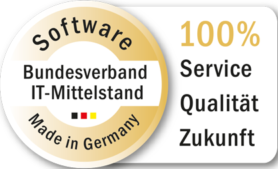The editor - an overview
Last updated:
The Editor is the most important part of Formcentric: this is where you create, edit and translate your forms. Directly next to the editing area, the Editor also shows you a preview of your form, so that you can always check your current state of progress while you are working on your form.
If you create a new form, it will be opened directly in the editor.


You use the Structure area to add form elements and pages to your form.
- Click the green plus sign to add form elements and click Add page at the bottom to add a new page to your form.
- You can search for form elements in the form tree.
- As you add form elements to the form, the form tree grows and expands to reflect the structure of your form. You can also use drag-and-drop here in the tree to make quick changes to the order of form elements or pages in your form.
- If your form currently has errors, these are indicated with red markings in the form tree. Find out more about this here.
.png)
This shows you the folder in which the form is located in the system.
.png)
In the editing area, you work on the form elements and pages that you have added to the form in the Structure area. If you select a form element or a page in the form tree, then the corresponding settings are shown here.
.png)
In the menu, you can see the items Settings, Share and Submissions, which are associated with the form that is open.
Click one of these items to access the corresponding area.
Click the arrow to access the Forms area.
.png)
Here you can see the current working status of your form. You can switch between the views Create and Test. In the Test view, you can work through the form under real-world conditions and generate form submissions.
.png)
All of the changes that you make to a form are saved automatically by Formcentric in the cloud. This lets you concentrate on your work and means you do not have to worry about making regular saves.
The cloud icon shown on the right indicates whether the form is currently saved.
.png)
The bell icon shows you the number of errors in your form. Your form cannot be published if it still has errors. Find out more about this here.
.png)
You use Publish to publish your form when it is ready. This step is necessary for your form to become public, which means it can then be accessed by a link or by being embedded in a web page.
.png)
Here, you can specify the design that will be used to present your form. This lets you check out some different designs for your form.


